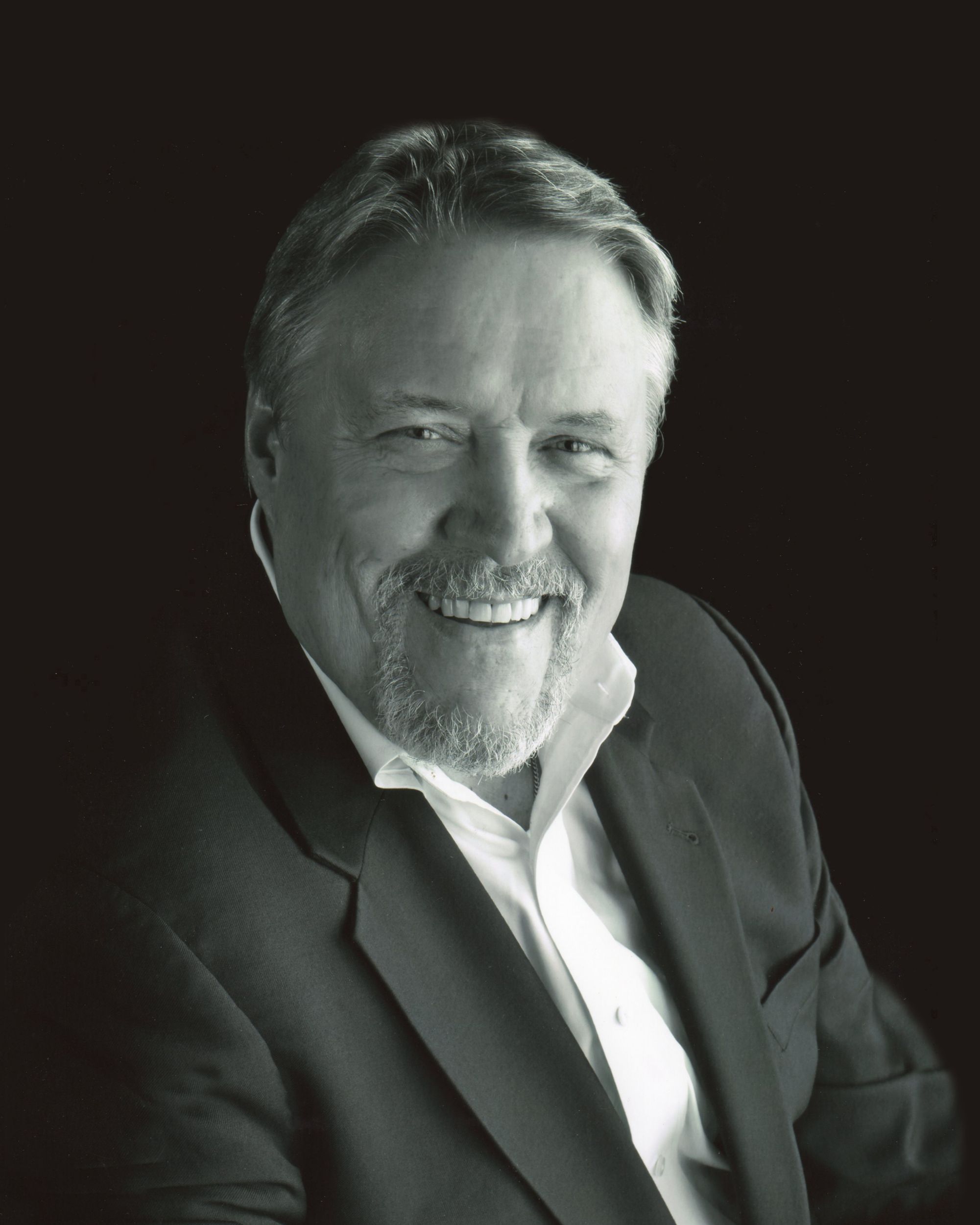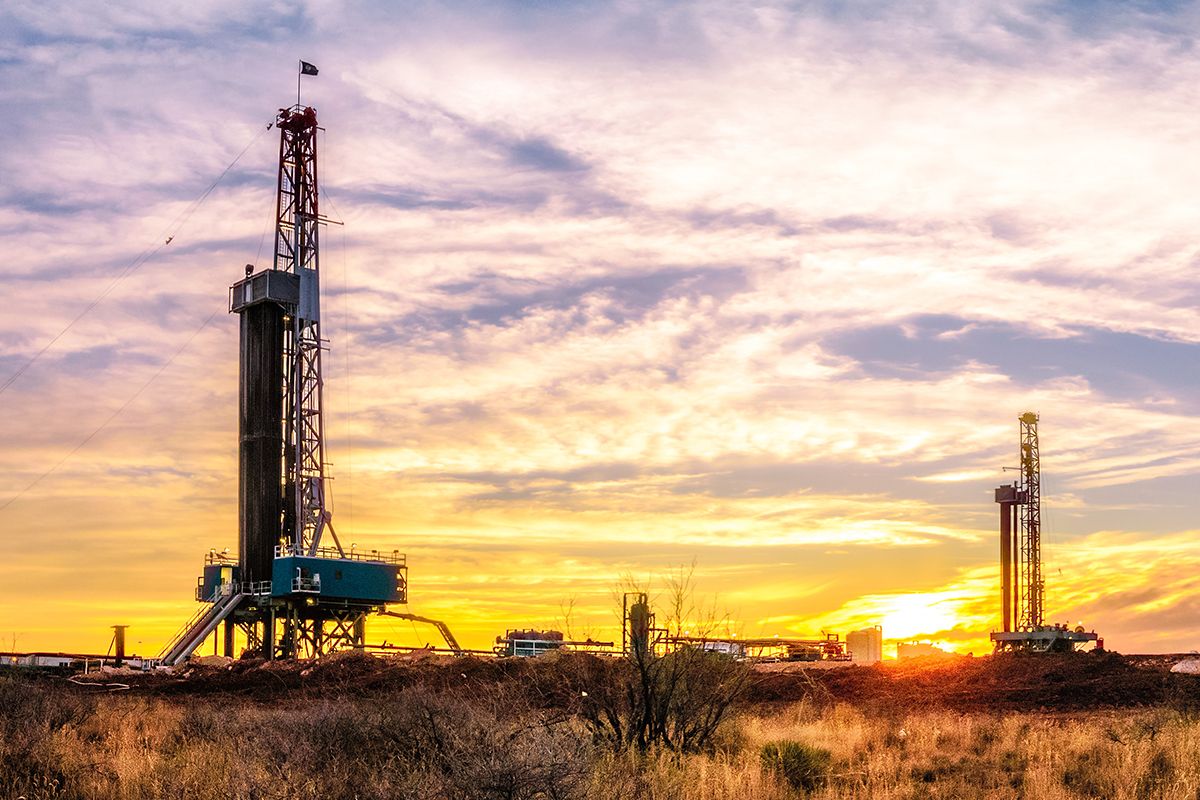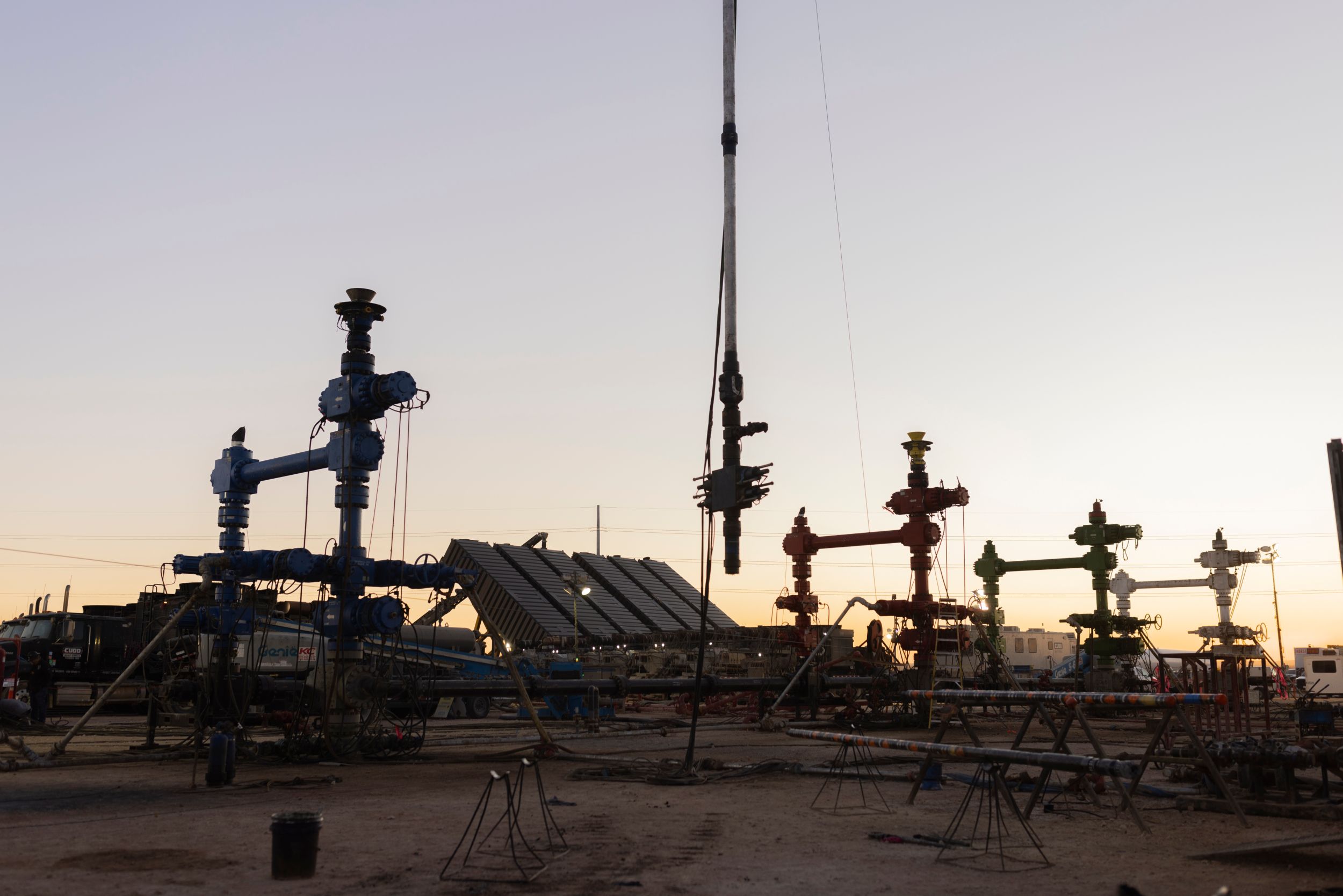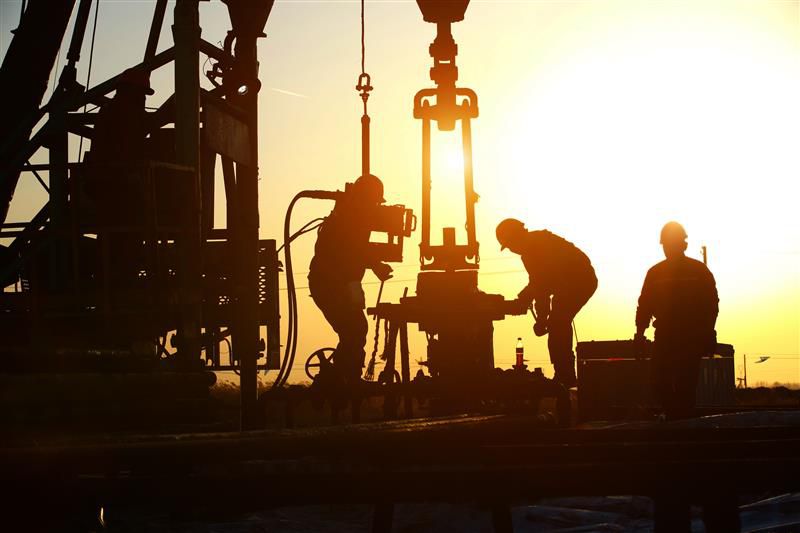Read the full episode transcript
00:00:00 Speaker 1
This episode of The Energy Pipeline is sponsored by Caterpillar Oil & Gas. Since the 1930s, Caterpillar has manufactured engines for drilling, production, well service, and gas compression. With more than 2,100 dealer locations worldwide, Caterpillar offers customers a dedicated support team to assist with their premier power solutions.
00:00:26 Speaker 2
The Energy Pipeline is your lifeline to all things oil and gas, to drill down deep into the issues impacting our industry. From the FRAC site to the future of sustainability, hear more about industry issues, tools, and resources to streamline and modernize the future of oil and gas. Welcome to The Energy Pipeline.
00:00:49 KC
Hello everyone and welcome to this episode of the Energy Pipeline podcast. Today our topic is renewable natural gas or biogas. We're fortunate to have Gordon Erndt, director of parts sales for Ariel Corporation as our guest. So welcome to The Energy Pipeline podcast Gordon.
00:01:07 Gordon Erndt
Thank you, KC. Good to be here.
00:01:10 KC
Great. Gordon, before we get started talking about biogas, can you take a few minutes to share a bit of your background with our listeners?
00:01:19 Gordon Erndt
Happy to. I grew up in Ohio, southern Ohio near Cincinnati out in the middle of nowhere. So grew up out in farm country and went to Georgetown University, studied business, and from there I learned how much I was interested in energy. Didn't really even look at any other careers. Once I found out that energy was the base of the entire economy and before anybody can do anything, somewhere somebody has to use some energy. That was what got me excited about a career in energy and from there, I haven't looked back. It's been about 15 years working for Ariel in Ohio and in Texas and now I cover support side of the business for Ariel across the globe and it's really quite fun for me. I get to work with customers every day. I'm solving problems, helping people make sure that their compressors are working the best that they can and making money for them and getting gas to where it needs to be.
00:02:26 KC
Perfect. Sounds great. That's great. Thanks for sharing that. So today's topic is biogas. So how does a guy from Ohio that goes to Georgetown, comes back and works for a compressor manufacturer, how did you become so passionate about biogas?
00:02:44 Gordon Erndt
Biogas is so interesting to me and the thing that, I didn't realize it at first, but it took me a little while, you're taking something that's a waste stream, manure or municipal wastewater or solid waste, and you're turning it into a positive, you're turning it into a revenue stream, you're turning it into something that helps people heat their homes or run their machinery or light their house. It's just exciting to take that and turn it into something else. It's a bit like alchemy to me.
00:03:24 KC
Very interesting. So I have very little experience with biogas and I do remember building a small line, HDPE line, from a solid waste site over to a manufacturing facility where they used the biogas to heat their furnaces. So that was my limited experience with this. So what are some of your experiences with biogas?
00:03:52 Gordon Erndt
Put some compressors in a number of different sites. Each site is completely unique and it makes it very interesting, very challenging. You have to configure the compressor just right for the situation. Sometimes it's dialing in specifically to what the compressor needs and it's going to stay there and run at that site, that specific gas, and then other times you're going to have gas conditions that change over time. You have growing population or you're adding animals to the farm and so you have to change and usually the Ariel compressors can adjust to that change and that makes it really, really interesting. How do you tailor the compressor to do what's necessary at the site?
00:04:41 KC
So it's not basic natural gas hydraulics where you've got X number of M coming in, X number of M going out at a certain pressure, boom. That's the end of it. You have to look at each site and be very specific in how you operate. That's very interesting, very interesting.
00:05:00 Gordon Erndt
The customization isn't necessarily easy, but it makes for a very efficient operation and it also helps you deploy capital correctly because you're spending money to build this plant and you need it to work and you need it to last for a long time. So having that flexibility built into your system is a smart way to run the business.
00:05:25 KC
Excellent. So biogas is booming, right? Why is that?
00:05:30 Gordon Erndt
Right now, it's pretty exciting. There are a few different areas of the country that are operating a low carbon fuel standard where people actually pay above market rates to receive biogas. Why would they do that? Because biogas is carbon negative. You're essentially taking a waste stream that would emanate methane or CH4 into the air and you're collecting that and you're using that to offset what somebody else would be using to power their electric system or power their vehicles. So if you were using electricity off the grid or you were using diesel or gasoline to run your trash hauler, your solid waste hauler, you would then be able to offset whatever that carbon would be because of all that methane that you've collected.
00:06:29 KC
Finding a source and using it instead of letting it go to waste. Makes perfect sense. So let's get into acronyms here for a second. In our previous discussions you've mentioned CNG and then RNG/biogas. Can you tell us what those acronyms are?
00:06:50 Gordon Erndt
CNG just stands for compressed natural gas. That's not very descriptive, but what it means in our business is that it's natural gas used for vehicle fuel. You have a city bus or a waste hauler or at Ariel we run our tractor trailers off of natural gas and we run our field service trucks and we have actually a Honda Civic too and all of those vehicles run off natural gas, which is fueled up by a compressor and a fueling skid that's in town and that's the vehicle side. Now if you move over to biogas or RNG, essentially those things mean the same thing. Renewable natural gas, biogas, essentially identical, and if you look down at the molecular level, biogas is methane and natural gas is methane. It's the same molecule. It's just that the source is different. You have some people who get into some difference of opinion on which one is which. Is biogas the stream that comes out raw before it gets cleaned and dried and all the impurities are processed out and what comes out is RNG? 90% of people don't make that distinction. It's just biogas is RNG is the same thing and if you think about it as a use case, they're all the same. It's all natural gas, it's all methane, it's all low carbon fuel.
00:08:24 KC
And it all burns at five to 15% mixed with air?
00:08:29 Gordon Erndt
Yeah. Absolutely.
00:08:30 KC
Okay. So speaking of that, when we're talking about RNG and biogas, what is the BTU level when it comes out of the system?
00:08:42 Gordon Erndt
It's low compared to what you would find in a well. Usually you're going to come out at about 45 to 65% methane on the raw gas and then you can upgrade it as much as you want. And depending on how you build your system, the desiccants that you use or the sieves or the upgraders that you use, it's going to come out a high percent methane, usually about 98% or thereabouts. So it's almost pure methane coming out at the end product. If you have a CO2 removal from your pressure swing absorption, your PSA, you're going to come out about 96% methane.
00:09:30 KC
Very interesting. Very interesting. So we know you work for Ariel, so how does an Ariel compressor play in the biogas arena?
00:09:43 Gordon Erndt
We're the final step in the process. After you've done all of the work to clean the gas and collect the gas, you're going to use the compressor to pressurize it and put the gas where it needs to be. Most people will use the gas on site to power their drivers, their prime movers. They can use that to operate a gen set and create electricity like you'd take a Caterpillar engine and turn it into a gen set and then use it on site to generate your electricity and put it into a pipeline. If you're right next to a pipeline, you can use that compressor to get your gas up to pipeline pressure. Another option is to fuel vehicles right there on site. For a lot of dairies, they're going to deliver milk via trucks and so they'll fuel their trucks using a compressor to get it up to 3,600 pounds roughly. Finally, you can also use a tube trailer. Essentially it's a semi truck with all these long thin tubes on the back and you're going to fill it up with as much gas as you can up to about 4,000 pounds and then deliver that to site. So if you had a remote manufacturing site that needed natural gas or could offset costs or carbon with natural gas, you could drive that tube trailer right to site, park it in the yard, and they could use that natural gas to fuel up for their industrial process.
00:11:12 KC
This is a whole new industry, isn't it?
00:11:15 Gordon Erndt
Absolutely. It's unlocked a lot of creative people to do some really neat things all in the name of offsetting carbon, being more efficient, or saving money.
00:11:26 KC
And by the way, I appreciate you giving a plug to my sponsor Caterpillar Oil & Gas. Thank you very much for that. So with Ariel, how big is biogas for your corporation?
00:11:44 Gordon Erndt
It's not been our traditional business to be in biogas. We've sold compressors here and there throughout the '80s and '90s as biogas first became something you would hear about in solid waste. Our business from the get- go was to be in the oil field or the gas field or the gas patch. We were building compressors to pressurize wellhead gas, partnering with small high- speed reciprocating engines that came out in the '60s and '70s. So we've been building those types of compressors forever. 55 years now. We've been selling CNG compressors since the'80s as well and sold a lot of CNG compressors internationally, thousands of CNG compressors, and we've sold hundreds of biogas compressors right. Now in the US, it's a boom time. Biogas is really exciting, there's a lot of opportunity, and we're seeing compressors being sold all over the country right now. Wherever there's waste from people or from animals, you're seeing biogas compressors get placed. We have biogas compressors 30 minutes from our factory. We've got biogas compressors all through the farm lands or the dairy lands or the breadbasket of the US as well. So it's changed Ariel's outlook. As we've grown and developed as a company, we're selling compressors for CO2 or CCUS. We're selling compressors for hydrogen. We're selling compressors for processed gas and refineries as well as pipelines and gathering in the gas patch. So it's changed our geography of our company.
00:13:30 KC
Very interesting. So with all of this going on, why would someone use an Ariel compressor at their biogas site?
00:13:39 Gordon Erndt
Sites are expensive and take a lot of engineering to operate. And so once you've built this plant, you want it to run. It's there to run and to capture this gas. That's why people buy Ariel because we're very reliable. We've been built on reliability and customer service. So once it's placed in site, you should expect it to run 8,000 hours a year or more. It should have a lot of mechanical availability. It should be a reliable compressor that you count on operating as much as you need it, starting, stopping. Whatever the process needs, the compressor should be able to handle it. We've done our job and the engineering company's done their job and the end user's done their job and they've spec'd the compressor, right? It should run and it should be relatively trouble-free. When maintenance is required, of course it's not going to run forever, but when you do need maintenance, you should be able to get customer support, you should be able to get parts quickly. That's a foundation of our business, of our company. Since our founder started the company in the '60s, customer service has been something that he's always focused on. They know that somebody will buy their first Ariel, but if you don't service them or you don't support them, they don't feel like they matter to you, then you're never going to sell another compressor. So that's been our focus. That's what's made us successful is customer service.
00:15:07 KC
Gotcha. Gotcha.
00:15:08 Gordon Erndt
And our customers know that the compressor that runs is going to be the one that is going to help them achieve their goals. And when they come to us and they say, "Can we trust your compressor?" We say, "Well the second compressor we ever built is still out in the field running today. We just found it last year. It had just been out there. No one knew where it was. It had just been out there running for 50 years." We don't know how many hundreds of thousands of hours it has on it, but it's probably somewhere between 300,000 or 400,000 hours. So when we're talking about reliability, that's the kind of reliability that we expect.
00:15:50 KC
So when that compressor's decommissioned, I suspect you'll find a nice place for it at your headquarters.
00:15:59 Gordon Erndt
We have number one and number three in our training center and we've cleaned them up and polished them and given them a nice paint job and they look great. They're great museum pieces. So now we want to see how long this other one can last. How many years can you actually run an Ariel?
00:16:16 KC
Yeah.
00:16:17 Gordon Erndt
We've got the clock ticking on that one.
00:16:19 KC
Very cool. Very cool. Very cool. So we've talked about the compressors and I know you mentioned it earlier, let's go back to the biogas facility. What are the components that are associated with biogas in addition to the compressor unit?
00:16:40 Gordon Erndt
The compressor itself needs a prime mover. It needs a natural gas engine or a diesel engine or an electric motor to operate it. There's also going to be a gas cooler, which handles the heat of compression, keeps the gas running at a nice temperature for the equipment. Lots of piping and vessels which handle the physics of the compression events, pulsation, liquid dropout, things like that. And that's going to be done by a packager. They're going to put it on a fabricated skid of structural steel and make sure that that compressor is going to operate properly. Once you've got the compressor package put together, you also are going to build biogas station essentially, which is going to be the gathering and processing of all of that gas and you need to drop out water, sometimes CO2, sometimes other impurities like siloxanes, and all of that equipment is going to be built by an engineering company or a biogas company that's going to come in and operate that plant for you. So there's desiccant dryers and heaters and there's pressure swing adsorption equipment. If you're into equipment, there's lots of really cool stuff going on at a biogas facility and it's all about separating those different constituents of the raw gas into the pure methane, which is what's usable.
00:18:12 KC
Yeah. Something you and I hadn't talked about previously, but I'm curious about it because at this landfill operation that I worked at, we had to put a vacuum on the system in order to pull the methane out of that system. Do you all get involved with that sucking the vacuum and pulling the methane out?
00:18:40 Gordon Erndt
Usually there's a blower or a screw compressor that will be on the front end. Reciprocating compressors are good at handling wide ranges of capacity or wide ranges of compression, but when you get down to the low end right around zero or even like you said as a vacuum, you're going to overwhelm a reciprocating compressor pretty quickly. But the best thing to do is put a blower or a screw compressor on it at that point, get it up to a reasonable pressure, and then let the reciprocating compressor do its work to get it to 3,600 or 1,600 or 600 or whatever it is that you need to operate your system at.
00:19:23 KC
Sure. My little project, we stopped at 200 PSIG because that's all the plastic HDPE pipe would handle at the time.
00:19:35 Gordon Erndt
Gotcha.
00:19:36 KC
So we kept it pretty low. I got you. So let's talk about building the biogas site if you will. So you mentioned you've got different developers or owners that are out there that are working on these biogas sites, whether they be, in my case, a solid waste disposal site or whether it be out on a farm. There are developers or owners that are out there that do that kind of work?
00:20:11 Gordon Erndt
Yeah, absolutely. There's companies that want to build engineer, finance, the whole thing. There's ones that specialize in certain areas. We have a couple of packagers that we work with Ariel that just want to build the compressor package and do a great job with that. There's other ones that will also add in a dispenser if you wanted to fuel vehicles. There's the pressure vessels for loading and offloading the tube trailers. You've other folks that will just simply build you a gen set system at site too. If you only wanted to create electricity, you could use that gen set system to build that. Now one of the questions that people ask themselves is, "What's the best or highest use for the gas?" If you're generating electricity on site, you compare that to the kilowatt-hour cost that you're paying on your local grid. And usually what people find is that there are folks in hard to obeyed industries that really, really appreciate having the access to that biogas because it's carbon negative. Instead of trying to reduce their carbon footprint, they're offsetting their carbon footprint and that's extremely attractive. So if you can capture that gas and put it into a pipeline system, then you can sell that offset to somebody in transportation or an industrial process that's emitting emissions that they would like to abate. And that's where that differential between the Henry Hub price of natural gas is and what people are willing to pay in those low carbon fuel standards states.
00:22:09 KC
Very interesting. Very interesting. So we've talked in generalities to this point. Do you have a specific example of a great biogas site that you and Ariel have worked on?
00:22:26 Gordon Erndt
Yeah. There's been some really cool ones I've got to be a part of. Maybe the most surprising or most interesting one was a vegetable cannery in South Carolina. We found out that this company, they would bring in the farmers' harvests, string beans for example, and they would cut up and wash and skin and de-string all of these pieces and all these vegetables and the vegetable pieces would then get thrown away. And so they started to collect all of these bits and bobs from the vegetables and put it into a lagoon with an HDPE, I guess you would call it a membrane. They had a membrane over top of it and all those vegetable pieces would be mixed with water and methane producing bacteria. The bacteria would eat those little bit of vegetables and produce methane and the membrane would capture all that methane and then they would put it into their biogas system. So they were taking a waste stream and capturing the gas, turning it into a usable product that they could then sell or offset their electricity needs. And the really interesting thing is they used that gas, put it through an Ariel compressor, pressurized it up to about 4,000 pounds, put it into a trailer, drove that trailer over to a pipeline, and injected the gas into a pipeline. Then that gas went up to North Carolina where it was sold to exclusive, or I'm not sure what the word is, it was sold to a prestigious university and went to fuel their heating and electricity at that university. So you're taking something so humble as wasted vegetable bits and turning it into something that supports young people studying, trying to change the world, trying to learn all those things to make the world a better place, and they're able to do that in comfort and security because of vegetable bits that someone is collecting in South Carolina. It was very inspiring to me and it was really fun to be a part of that process.
00:24:45 KC
Very cool story. A couple of things that I pick up on there. First, you're pressuring it up to 4,000 pounds. Most transmission lines are operating at a much lower pressure than that. So obviously you didn't need any compression. Once you got it into the truck, into the cylinders, it was just basically releasing, but you had a high enough BTU content that the pipeline company that you were giving the gas to felt comfortable mixing it with their existing gas stream. Is that right?
00:25:23 Gordon Erndt
Absolutely. They were able to get the gas up to pipeline quality and that means that there's a very small amount of water that they've mixed it appropriately so the BTU content is going to go in there and not going to disrupt their operations.
00:25:40 KC
Yeah.
00:25:41 Gordon Erndt
It's essentially chemically similar or chemically identical. Once it's in the pipeline, you can't distinguish it from the fossil natural gas that they're pushing.
00:25:55 KC
With this story you've opened my eyes right off the bat. I always thought, "Okay, fine. We got renewable natural gas so it's going to be at a low BTU content so I can use it for these boilers if I do this, this, and this," but I never imagined that we could get it clean enough to actually make it pipeline quality and inject it into a pipeline to be used somewhere else. You're teaching this old dog a couple of new ideas. I'm impressed by that. Thank you very much. That was a great story, great conversation.
00:26:33 Gordon Erndt
Thank you. There's so many interesting things about biogas that I feel this just the same as you do that the more I learn, the more passionate, the more interested I become. We're seeing that more than 50% of the transportation natural gas is biogas. Companies like Waste Management or Rumpke are powering their waste haulers with the natural gas that they produce in their landfills. Companies like BP and Archaea are finding ways to integrate their systems to provide value to their customers in more than one way. I mean, biogas, it takes a lot of forethought and it takes a lot of strategic thinking, but the people that are building these facilities are connecting problems and solutions and they're acting as that middle person to come and connect all those people with different needs and it's really neat to see the community transformation when these sites are built. If you think about the American heartland or the farmers or the farmland, it's not always been an easy thing to make a living at. And so you're taking something that would've been a cost for them that they would've had to offset and you're turning it into a valuable commodity that they can operate as another business and sell a valuable product and it changes the economics of the farm or of the waste water treatment plant when they have this extra revenue source that they can use.
00:28:17 KC
Well just a personal note, I volunteer at different PGA events and actually in February was out at the Waste Management Phoenix Open. And to see what they're doing with their natural gas driven vehicles, lot of vehicles that were out there were marked CNG, and the zero waste, zero carbon footprint that they're trying to head toward is really quite remarkable. I did get to see that up close and personal and I found it really, really quite impressive.
00:28:56 Gordon Erndt
It's really neat. The other thing with CNG that I'm so impressed by, it just comes down to the chemistry. You have a very simple molecule, methane, CH4, one carbon, four hydrogen. And so as you burn that gas, very little carbon is produced. So depending on your system, you're going to reduce your carbon by 30 or 40% from a straight engine to a straight engine. Now if you use catalysts, it gets complex of course, but the other real benefit for CNG when it comes to transportation is that you're offsetting other types of pollutants like socks and knocks and particulate. So if you're worried about local air quality, natural gas, CNG, is extremely beneficial because of that local air quality difference that it makes. And so we've seen people that natural gas for buses and waste haulers especially and it changes the local air quality pretty significantly. It's a neat thing to see and it helps people align with their goals too, right? You got, like you said, Waste Management has this goal of offsetting their emissions or getting close to zero and here's a great way to do it. They've figured it out for themselves and combined their business with their goals and it's really neat to see that.
00:30:20 KC
Excellent. Excellent. Well I've really enjoyed our conversation. You've opened my eyes to a different world, things that I hadn't thought about before. I obviously am not at the cutting edge of biogas as you are, at least keeping in touch with what's going on. So thanks very much for educating me on all of that. So we're getting close to time. So I've thoroughly enjoyed the conversation today and you've really opened up my eyes to a lot of things that are going on. I haven't been in touch with the technology to know how many advancements there are out there, but we are running out of time. So is there anything else you'd like to add, Gordon, before we sign off?
00:31:05 Gordon Erndt
Thanks, KC. This has been really fun. The thing I guess I would like to leave our listeners with is how important energy availability is to human flourishing. Ariel and others are passionate about making sure that energy is available. We think that natural gas is a great way to power the world with low carbon, lower emissions, it's abundant, it's affordable, and that's really exciting, but that's what we're also so excited about biogas is it's unlocking a new and untapped energy source and the more energy that's available, the better off we all are because we can live our lives the way that we want to in comfort and in security. That gets me really excited to be a part of that. When I get to hear about people who aren't worried about if their lights are going to turn on, if their heater is going to be able to run in the winter, that's the stuff that makes me really happy that I'm in the industry that I'm in and this is the career that I've chosen.
00:32:15 KC
Excellent. Very profound thought. So thanks very much, Gordon. I appreciate you taking the time to visit with us today. So thanks to all of you for tuning into this episode of The Energy Pipeline Podcast, sponsored by Caterpillar Oil & Gas. If you have any questions, comments, or ideas for podcast topics, feel free to email me at kc.yost@oggn.com. I also want to thank my producer, Anastasia Willison-Duff and everyone at the Oil and Gas Global Network for making this podcast possible. Find out more about other OGGN podcasts at OGGN.com. This is KC Yost saying goodbye for now. Have a great week and keep that energy flowing through the pipeline.
00:33:01 Speaker 2
Come back next week for another episode of the Energy Pipeline, a production of the Oil and Gas Global Network. To learn more, go to OGGN.com.









